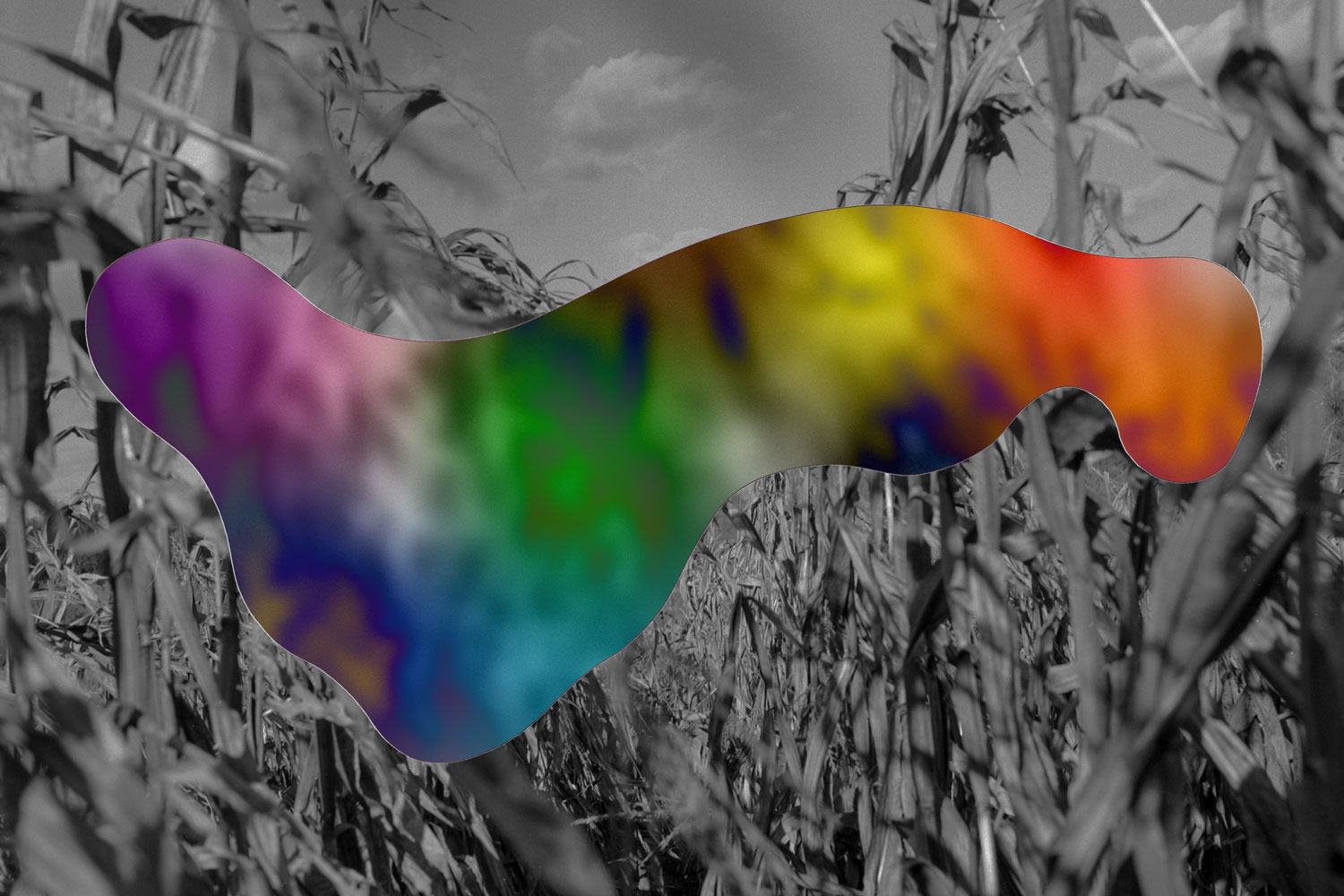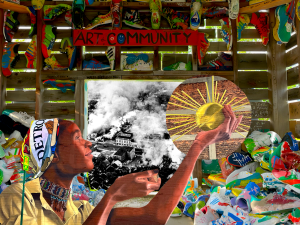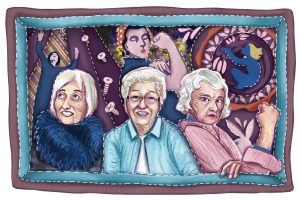June 2021. I work a minimum wage job at a soap store just north of Indianapolis. Today, I have a shift with a dear, queer coworker. Entering the store, I greet him —
“Happy Pride!”
“I’m not proud.”
I look at him, amazed.
Sensing my perplexity, he elaborates, “What’s there to be proud of?”
He is just nineteen. He is nineteen and he already hates himself.
And I understand this. Because when I was nineteen I also hated myself.
I’m a Hoosier. I’m a child of corn and soybeans and Midwestern niceties. And as soon as I turned nineteen, I left. Because I felt that I couldn’t be queer here.
Because what’s there to be proud of in Indiana?
And why is there a mass exodus of queer people from the midwest to larger, more metropolitan areas?
I’m home now. After five lost years in New York City, I’ve returned to the Heartland. Twenty three years old, bisexual, college graduate. I am Indiana’s prodigal son.
It’s a bright, summer day. I ride in the passenger seat of my mother’s car. The windows are down, and the warm breeze brushes my cheek like a kiss.
Finally, I have enough courage to ask my mother — a devout Catholic and lifelong Midwesterner —
“Do you know what Pride Month is?”
But I already know her answer. So I tell her.
I tell her that Pride Month started in 1969 following the Stonewall Riots. I tell her that after years of being abused by the police, the queer people at the Stonewall Inn, a bar in New York City, decided to finally fight back. I tell her that it is because of those riots, those queer pioneers, that I can be the person I am today. That I can be queer in public. That I can be me.
My mother listens, silently.
It’s a warm night. The sky is cotton candy pink and blue and purple. It’s one of those Indiana summer nights that make you feel like you’re the main character in an indie drama. My girlfriend and I sit in her beat-up old blue Camry outside of a GetGo convenience store.
A group of teenage boys pull up to the GetGo. They peer at us through the windshield as they walk into the store. I don’t think anything of it until they return to their car. They back up and drive straight towards our car. Panic sets in. Will they hit us?
But they don’t. Inches from our driver’s side door they screech to a halt. Instead, they flash their brights at us and yell slurs, laughing.
My girlfriend locks the car doors.
It’s a hot day in Indianapolis. My girlfriend and I walk down the street. We are holding hands.
A passing truck rolls down their window and yells, “Get a room!”
Not the most creative insult I’ve gotten, but still, I flinch. Impulsively, I pull my hand away.
But she doesn’t let go of my hand.
What’s there to be proud of in Indiana?
“I don’t really think there’s this holy land for [queer and] trans people out there where we just get to live life better than we would otherwise,” Andy says to me.
Andy is a lifelong Hoosier. They grew up in the small town of Warsaw, Indiana and left for school in St. Louis, only to return to Indiana to raise their family. Now, at thirty four, they are married and raising a child with their partners in Warsaw.
“It’s really hard to go to school and work and raise a kid all at the same time if you don’t have any family nearby. I just didn’t have the time and energy for all of those things. So I came back here [from St. Louis] to finish school.”
Situated in the northeast pocket of the state, Warsaw is the definition of Small Town, USA. And while it might be a forty five minute drive to the nearest Target, Warsaw offers the natural beauty of Indiana’s plains and lakes that you can’t get in the urban center of Indianapolis.
In recent years, the medical orthotic and arthroplasty field has boomed in Warsaw, bringing many young professionals, like Andy, to the area. Andy tells me all this from their couch over a video call. We talk just after work; they still are wearing their work polo. In fact, it’s their work that they credit for a lot of structural support they receive in Indiana.
“It’s [about] the structural resources you have access to more so than where you live…It’s great if you can get [a job with structural resources], but the barrier for a lot of people is education.”
“In my experience just in terms of working, if you can get the education and you can get the job, it’s pretty good here [in Indiana]. But I have a lot of trans friends in the area that don’t have the education required for a higher paying job. And it’s really difficult putting up with people’s prejudices [when you work a service job] where you’re just exposed to every customer ever, whereas I’m tucked away in an office.”
Andy speaks extensively about the resources offered to trans and queer Hoosiers. “Indiana has pretty decent medicaid, like the Healthy Indiana Plan. That program is pretty robust and they don’t even bat an eye for anyone that needs hormone replacement therapy…and so just basic things like that I think makes the biggest difference [for quality of life]. When you have healthcare, when you know you have emotional support, you can just be so much more resilient in the face of everything else.”
Resilience is a big word with Andy. They use it several times, and the strength and confidence in their voice is reassuring to my weary, jaded ear.
“I feel like there’s this idea that trans authenticity is tied into trans suffering,” they tell me, impassioned. “I don’t think it’s healthy for any group of people to be defined by their suffering when we also have so much resilience. And so that’s what I think– what we have a lot of is resilience, especially in Indiana.”
So what is there to be proud of in Indiana for Andy?
“I just know that like a decade ago I didn’t have anyone [in my life] that was living a future that I could see for myself, and I think there’s more of an opportunity now to say, ‘Hey, look, I am happy and healthy.’ It’s not all bleak and there’s something worth living for, something worth fighting for.”
When I ask them if there’s anything they want to add before we finish up they say, “I think it goes without saying that I’m anti-capitalist.”
I’m in a coffee shop in West Lafayette. Per the suggestion of my interviewee, we go to Vienna Coffee House, because it’s the coffee shop of the people. Outside, the college students are smoking around a courtyard. A recent chill has filled the air, but none of these young people seem to want to wear jackets. Funny — I remember feeling the same rebellious way when I was in school. Sometimes there is a comfort in consistency.
Magnus walks in, bleary eyed under browline glasses. It’s early for a college student. Pink hair pokes out from under a gray beanie; he smiles at me widely. Magnus is studying interdisciplinary sciences at Purdue University. Originally from the smaller, northwestern Indiana town of Whiting, Magnus moved to West Lafayette like so many other young people for school.
“There definitely weren’t as many visibly queer people in my hometown, so everyone knew every LGBTQ person. You could list them all by name. There was a lot of pressure to fly under the radar and not be visibly queer, but there’s so many more visibly queer people here [in West Lafayette]. And, like, I didn’t really know any non-binary people until I came here, I didn’t really know any asexual people until I came here. There’s a lot of different representation here.”
Understandably so. West Lafayette is a pretty sleepy town until the fall semester hits. Then, as soon as the weather starts to change, eager, young minds from across the world flood the campus in pursuit of higher education, bringing new perspectives to this otherwise quiet Indiana town.
Magnus is incredibly bright and extremely bubbly, he beams every time he answers me and speaks with such optimism. It’s infectious, really, and I find myself smiling right back. “People think of a Hoosier as some corn-fed white boy who worked on a farm. And certainly there is a lot of farmland in Indiana so there’s going to be a lot of those — but I think the cool thing about living in Indiana is how many different types [of people] you meet. Like, [in the] Crossroads of America you’re gonna meet a lot of different types still. I think Hoosiers are pretty diverse when you get down to it.”
“I feel like people don’t think of Indiana as a great place to be trans or gay or bi or anything. My experience has been, like, yeah, there’s some negative stuff, like some people have come at me sideways for being how I am. But the outpouring of support that I got when I came out both times [was enormous].”
Magnus recently found himself faced with a roadblock in his transition. Confronted with the possibility that insurance wouldn’t find top surgery medically necessary, he turned to his community for support.
“I actually had a GoFundMe for my top surgery, but I needed three thousand dollars and I got this outpouring of support from my Lafayette and West Lafayette friends. It was just amazing how much support there is. Even people just sharing the campaign and stuff like that. If you ask for help you get it around here.”
Before we finish up, Magnus tells me one last thing about his experience in Indiana: “I think it’s important to understand that the vast majority of Hoosiers might not fully understand LGBTQ+ issues, but they’re going to treat you with respect. I think that’s a pretty Hoosier value — like, you might not understand something but you’re going to treat it with respect.”
I’m starving. Good thing I’m at Baby’s, an Indianapolis restaurant right off of Talbot Street.
Destiny’s Child plays as I walk in (though in hindsight, I wish I would have strutted in. If any place calls for strutting in, it’s Baby’s). Inside, it looks like Wes Anderson designed a diner. Pastel pink acrylic diner seats stretch throughout the restaurant, and a neon pink “Baby’s” sign perches above the bar. Next to it, a chalk sign advertises their wildly popular, monthly drag brunch (I’m told it always sells out).
I’m led through a bustling kitchen, up a set of winding stairs, to a small, attic-like room that has been retrofitted into an office. The building itself has been around since the 1920’s and has seen several changes over the years.
“This [location has] been a gay bar under various ownership since the 1940s,” Baby’s general manager Ruth Hawkins tells me. “So the side that Baby’s is on was a drag club called Legends Show Bar. And the other side, which is still empty, was Talbot Street Nightclub, and that was a dance club.” They pull out a photo of the original space: a pristine 1920’s theatre, then turned gay club. Now, Baby’s.
Baby’s is adamantly a family restaurant, Ruth tells me. “Here at Baby’s our credo and motto is we’re a family restaurant, we just happen to take care of all families. We host a monthly drag brunch and it’s all ages. So for us, it really became about normalizing queer culture to an audience that maybe hadn’t been exposed to it before. And saying, like, no this isn’t weird, it’s not taboo, it’s literally something you can bring your kids to.”
In the background, the whirring of milkshakes fills the air. “I ascribe to the Gen Z philosophy of, like, build the space that you want to live in where you are. But I think if everyone tries to leave and find their queer haven, it’s not going to exist anywhere. And if queer people truly want to be integrated, build that where you are.”
To me, Ruth is like a queer prophet, gifting me the good word: “Go and be gay!”
“Not only do I believe as queer people we should build queer spaces, I also believe that as queer people we should go to straight spaces and just be there — and, like, be gay. I try to tell the kids here a lot, don’t just go to one of three spaces. Go be gay! They love Sam’s Silver Circle, which is this hole-in-the-wall bar. But if you go on any given night, it’s [country folk] and queer people.”
This past summer, I was performing in a Shakespeare production in a rural part of northern Indiana. I used to drive past a honky-tonk called “Me and My Bar.” The name always made me chuckle, and I tried to convince my fellow castmates to join me there one night. But we were afraid. Now, I wonder what it would’ve been like for us funny looking, queer actors to join the motorcyclists in a round of drinks at Me and My Bar. Should we have gone and been gay?
As if reading my mind, Ruth adds an addendum to their prophetic wisdom, “Go and be gay at a place that’s not just traditionally gay. But only do it if you’re at a good place with yourself.”
I clamber back down the stairs and return to the restaurant to eat. Baby’s has filled up; just like Ruth told me, the clientele is varying. A kid enjoys a milkshake with his family in a corner. Flannel clad, bearded men share a bistro table. I sit by an older couple, who inquire about the drag brunch to their waiter.
My waiter, Michael, recommends me the strawberry milkshake and the Swissy That Walk burger. When the food arrives, it’s served on a pastel green luncheon tray. The burger is juicy and the house made garlic aioli is delicious. I imagine RuPaul saying, “shantay, you stay,” after taking a bite of her honorary burger.
I leave very full, indeed.
It’s fall now. Five months after Pride month. The fields of summer corn have been harvested. In their place, golden yellow and oranges of the tulip poplars populate the ground.
I’m a year older, too.
It’s been five years since my own exodus from Indiana.
I moved to New York in pursuit of the queer holy land. And while there was a denser population of queers, there was also an equally dense population of bigots. In polite conversation, I was tacitly accepted as an Other. But the streets rejected me. Hand in hand with a woman, I was regularly met with violence, externally and internally.
I hear Ruth’s words echo in my head —
I think if everyone tries to leave and find their queer haven, it’s never going to exist anywhere.”
Indiana is by no means a queer utopia. But, as I discovered, neither is New York. And I have given up the search for my LGBTQ+ holy grail.
Instead, I am pursuing the annihilation of my own internalized homophobia. I am killing it every day, every time someone heckles me on the street, every time someone threatens me, every time I get dirty looks. I am killing it by continuing.
Because my queerness isn’t visible until I make it visible.
And so, I will hold my girlfriend’s hand on the street.
I will kiss my girlfriend in public.
And I do it for me. And I do it for you. And I do it for every other queer body existing in Indiana.
And I continue. Because Indiana doesn’t make me proud. I make Indiana proud.
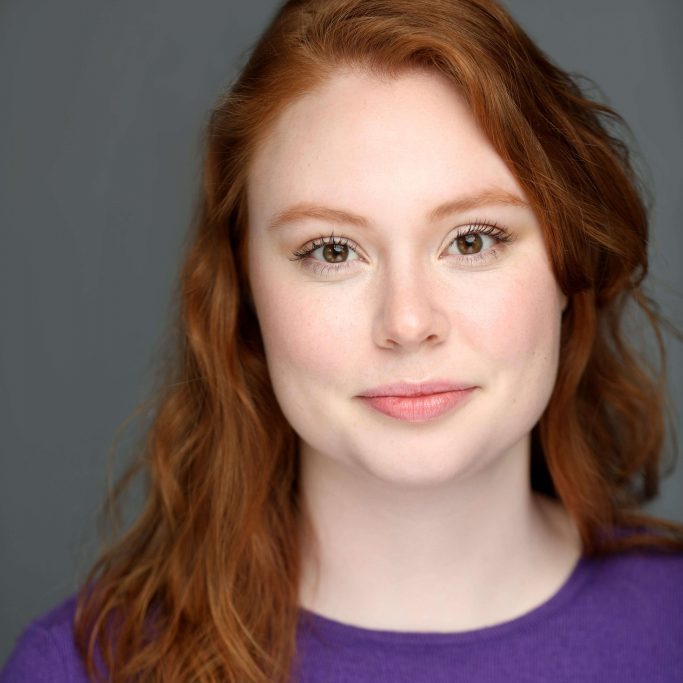
About the author: Haley Glickman (she/her/hers) is an actress, writer, and poet based in Indianapolis. Her work is a love letter to Midwestern queers, a celebration of nontraditional bodies and lifestyles that exist in traditional spaces. Her poetry will be featured in Sinister Wisdom Literary Magazine in 2023. www.haleyglickman.com
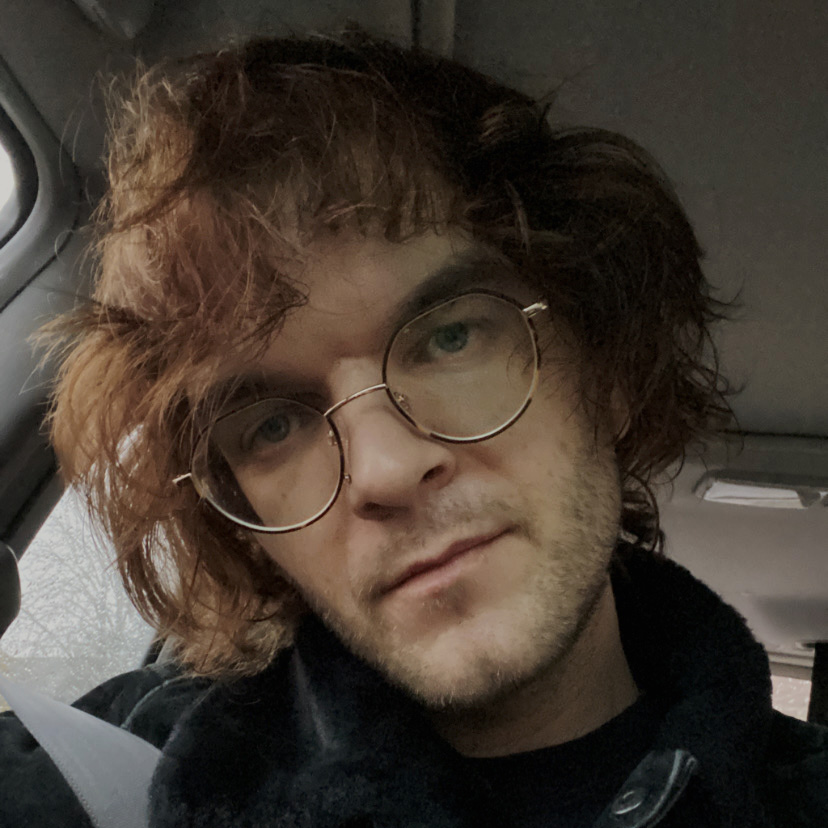
About the illustrator: Ryan Edmund Thiel’s multidisciplinary work is an exploration of identity — art as an expression of intuition and the interior life, design as an authentic voice and personality, and portraiture that focuses on nuance and power. Care, inclusivity, and queerness lie at the center of Ryan’s work.
